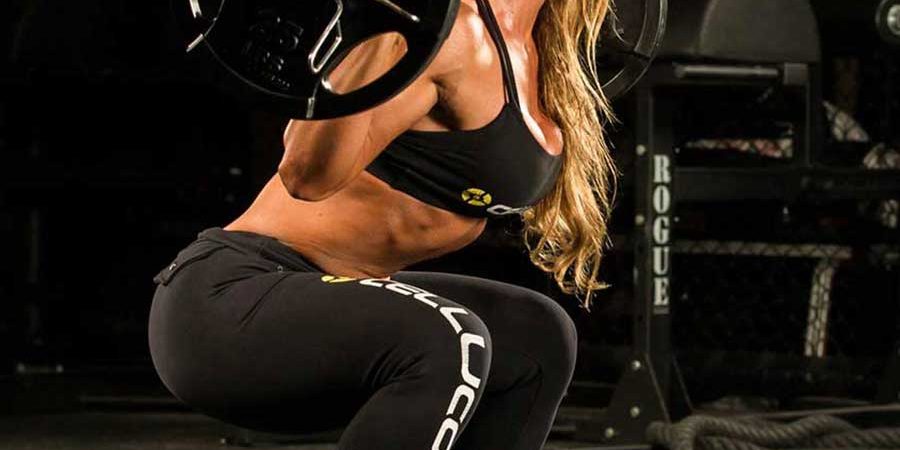M squats always felt limited—I struggled with depth, balance, and targeting the right muscles. I tried a slant board for my squats workout, and after just a few weeks of into my routine, my quad strength skyrocketed, my knee pain vanished, and I could finally achieve a deeper, more controlled squat. It’s a game-changer for anyone looking to optimize their lower-body workouts and build great strength and power in the quads and calfs!"
When it comes to building lower-body strength, improving mobility, and enhancing overall athleticism, squats reign supreme. But have you ever considered how different squat variations can impact your goals?
Enter the slant board squat, a dynamic twist on the classic squat that challenges your muscles in new ways while offering unique benefits.
Let’s explore how slant board squats compare to regular squats, answer the most common questions about their use I’m asked at the gym, and I’ll share my guide on how I maximize the benefits from this squat technique.
Let’s start with the basics if you’re unfamiliar with a slant board, also often called a squat wedge or incline board, when performing squats or similar exercises.
A slant board squat involves performing a squat with your heels elevated on a slanted platform. This elevation shifts your center of gravity and changes the biomechanics of the movement, placing greater emphasis on specific muscles and reducing strain on others.
Slant boards are often used in Physical Therapy for injury recovery and rehabilitation, flexibility training, and athletic performance enhancement, but their versatility makes them a valuable tool for anyone’s fitness routine.
How Does a Slant Board Squat Compare to a Regular Squat?
While both slant board squats and regular squats engage the lower body, the key differences lie in muscle activation, range of motion, and joint stress. Here’s a breakdown:
- Muscle Activation:
Slant board squats emphasize the quadriceps more than regular squats, as the heel elevation reduces reliance on the hamstrings and glutes. This makes them ideal for developing quad strength and addressing muscular imbalances. - Range of Motion: The incline increases the depth you can achieve during a squat, leading to greater mobility and flexibility in the ankles and knees.
- Joint Stress: For individuals with limited ankle dorsiflexion (the ability to flex the foot upward), slant boards allow for proper squat form without placing excessive strain on the knees or lower back.
- Health & Injury Prevention: Adjustable slant boards are also an great injury prevention tool and overall health by reducing knee and joint strain and preventing injuries like plantar fasciitis, calf cramps, Achilles tendonitis, heel bursts and shin splints and more. They enhance greater flexibility, ankle mobility, balance and proper movement mechanics for safer workouts
Regular squats, on the other hand, provide a more balanced activation of the quads, hamstrings, and glutes, making them ideal for overall strength and power development.
Which Muscles Are Targeted During a Slant Board Squat?
Primary Muscles:
- Quadriceps: The slant board’s incline increases the workload on your quads, making them the primary target.
Secondary Muscles:
- Glutes: While less activated than in regular squats, the glutes still engage to stabilize your movement.
Calves: The elevated position engages your calves for balance and control.
Stabilizers:
- Core: As with any squat, your core muscles stabilize your spine and maintain proper posture.
How to Perform a Proper Slant Board Squat
To reap the full benefits of a slant board squat and avoid injury, follow these steps:
- Set Up the Slant Board:
Position the slant board at an angle that elevates your heels comfortably. A 20-30 degree incline works well for most people. - Position Your Feet: Stand with your heels on the board and your toes pointing slightly outward. Your feet should be shoulder-width apart.
- Engage Your Core: Tighten your core to support your lower back throughout the movement.
- Descend Slowly: Lower your body by bending at the knees and hips, keeping your back straight and your chest up. Aim to go as deep as your mobility allows while maintaining control.
- Drive Up: Push through your heels to return to the starting position, ensuring your knees track over your toes.
- Repetition: Perform 8-12 reps for muscle building or 15-20 reps for endurance, depending on your fitness goals.
Common Questions I Get at the Gym
Q. Are Slant board squats good for knee pain?
Yes! The slant board reduces strain on the knees by improving squat mechanics, making it a great option for those recovering from knee injuries or dealing with conditions like patellar tendinitis.
Q. Other than building strength, can slant board squats help with flexibility
Absolutely. The incline promotes deeper squats and increases ankle and hip flexibility over time. Regular practice can enhance your overall range of motion.
Q. Should I use a slant board if i have good balance and ankle mobility?
Even with good ankle mobility, slant boards can help isolate your quads and improve squat depth, making them a valuable addition to your routine.
Q. How often should I perform squats with the slant board?
Incorporate slant board squats 1-3 times per week, depending on your workout split and recovery ability. They work well as a supplementary exercise after regular squats or as part of a focused quad workout.
What equipment do I need?
All you need is a sturdy slant board and, optionally, weights or resistance bands to add resistance.
Q. What are some of the benefits I would see using a slant board for squats?
- Enhanced Quad Strength: Perfect for athletes needing explosive power or individuals looking to sculpt their thighs.
- Reduced Risk of Injury: Improved squat form minimizes joint stress and helps correct muscle imbalances.
- Versatility: Suitable for rehabilitation, mobility training, and advanced strength routines.
- Improved Squat Depth: Unlock deeper squats to activate more muscle fibers and improve flexibility.
When should I do regular squats instead of a squat wedge or slant board?
While slant board squats or using squat wedges offer unique benefits, regular squats remain irreplaceable for balanced lower-body development.
Regular squats still…
- Build overall strength by engaging the glutes, hamstrings, and quads evenly.
- Train functional movement patterns for sports and daily activities.
- Allow for higher weights, essential for building raw power.
Choosing between slant board squats and regular squats depends on your fitness goals.
If you’re aiming to target your quads, improve mobility, or reduce joint stress, slant board squats are a game-changer. On the other hand, regular squats provide comprehensive lower-body development and are a staple for strength training.
For the best results, incorporate both variations into your routine. Whether you’re rehabilitating an injury, looking to break through a plateau, or simply mixing up your workouts, a slant board can elevate your squat game—literally and figuratively.
Can You Prevent Plantar Fasciitis?
In addition to treating plantar fasciitis, a slant board can also be used as a preventive tool to avoid future issues.
Regular stretching and strengthening of the lower leg muscles improve balance, mobility, and flexibility, which can help prevent plantar fascia strain. It’s also a great addition to your home workout routine for building muscle, strength, and power.
By taking proactive steps to care for your feet and legs, you can avoid the pain and frustration of plantar fasciitis and enjoy a more active, pain-free lifestyle.
Plantar fasciitis is a common and painful condition, but with the right knowledge and tools, you can effectively manage and even prevent it.
Stretching, strengthening, and using a slant board are key components in relieving pain and promoting long-term foot health. However, always consult with a registered physiotherapist or doctor if you’re experiencing persistent pain. Taking care of your feet now can save you from more severe problems down the road.
How Long Does It Take to Recover?
Recovery from plantar fasciitis varies depending on the severity of the condition and how diligently you follow your treatment plan. For mild cases, recovery may take anywhere from a few weeks to a few months.
In more severe cases, it can take six months or longer to fully heal. The key to faster recovery is consistent treatment and rest.
*Disclaimer: This article is meant to share knowledge based on personal experience, discussions with others who have had similar issues, and insights from physical therapists. It is for informational purposes only. For medical advice or diagnosis, please consult a registered physiotherapist or doctor.*







